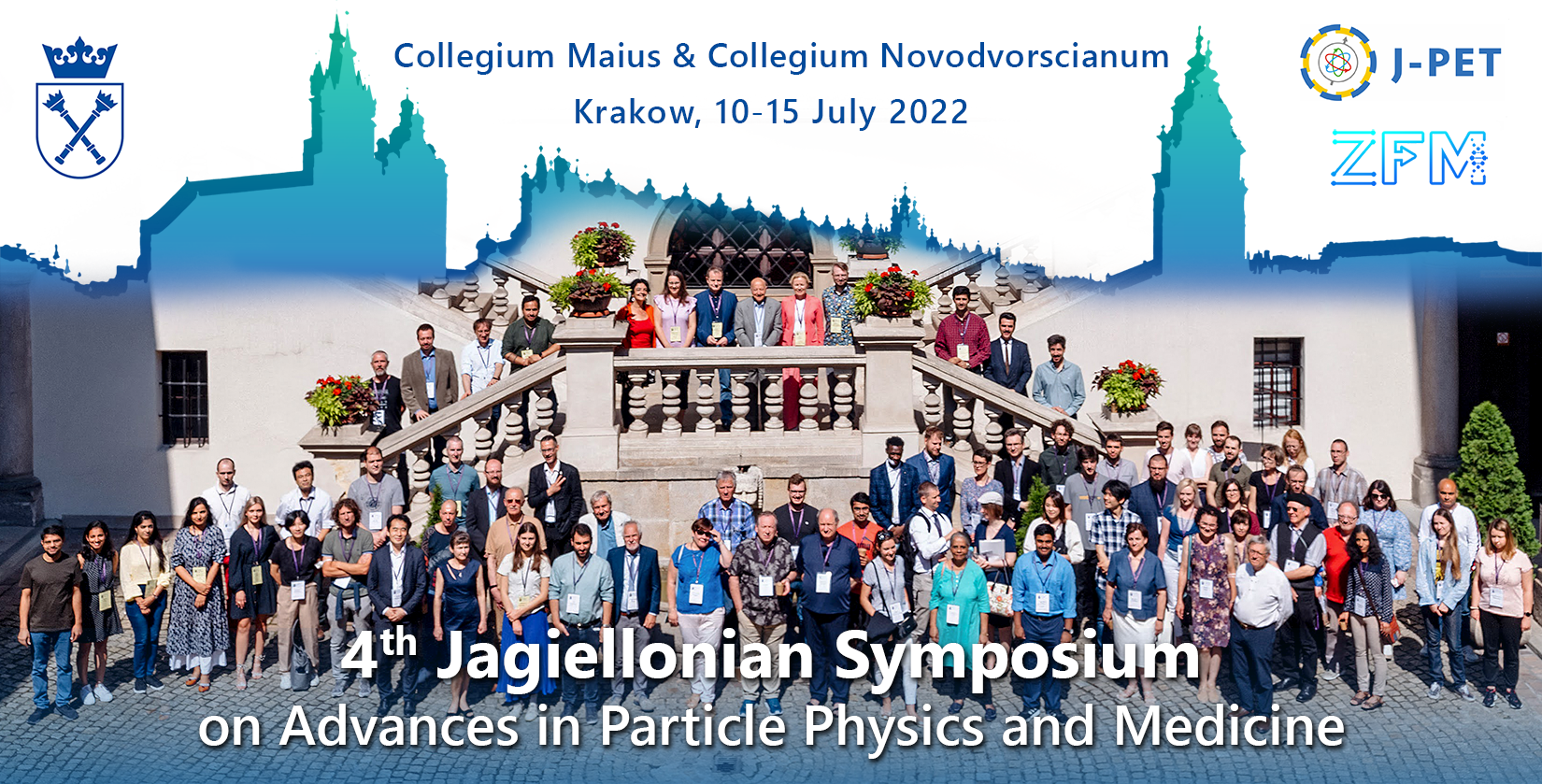Speaker
Description
Author: Gabriela Łapkiewicz
Co-authors: Pawel Moskal, Szymon Niedźwiecki
G. Łapkiewicz1,2*, Sz. Niedźwiecki1,2, P. Moskal1,2, on behalf of J-PET collaboration
1Faculty of Physics, Astronomy and Applied Computer Science, Jagiellonian University, Cracow, Poland
2Center for Theranostics, Jagiellonian University, Cracow, Poland
Phantoms used in PET technique, such as NEMA IEC allow for measurement of activity concentration accumulated in different volumes. New imaging method developed by the Jagiellonian PET collaboration in addition to the annihilation density distribution enables measurement of positronium lifetime [1-4]. To qualitatively determine the precision of this method it is essential to construct a phantom, which will allow for measuring ortho-positronium lifetime alongside activity concentration.
The proposed phantom (much like NEMA IEC) will consist of 6 volumes of high activity accumulation immersed in the lower activity background. Each volume will feature different mean
lifetime of ortho-positronium. Isotopes used for measurements must not only exhibit β+ activity, but also need to emit prompt gamma quanta (i.e. 44Sc or68G a) [5], [6]. In this contribution a
method for controlling ortho-positronium lifetime is discussed along with preliminary results.
In order to evaluate a method for the prepration of media with different ortho-positronium lifetime we have studied the ortho-positronium lifetime in water suspension of XAD4 porous material.
XAD4 is characterized with the average pore size of 50 Å and can absorb water up to 60% of its mass [7].
Five samples of XAD4 with controlled amount of water were measured using PALS technique. Additionally one dry sample of XAD4 and one sample of pure water were measured. Obtained spectra were fitted with PALS Avalanche [8] and components corresponding to the ortho- positronium annihilation in XAD4 pores were established [9]. The results showed the correlation between the lifetime and production intensity of ortho-positronium and the concentration of XAD4 in water.
Acknowledgements:
The authors acknowledge support by the TEAM POIR.04.04.00-00-4204/17 program, the NCN grant no. 2021/42/A/ST2/00423 and the SciMat and qLife Priority Research Areas budget under the program Excellence Initiative - Research University at the Jagiellonian University.
References:
[1] P. Moskal et al., Positronium imaging with the novel multiphoton PET scanner, Science Advances 7 (2021)
[2] P. Moskal, Positronium Imaging, 2019 IEEE Nuclear Science Symposium and Medical Imaging Conference (NSS/MIC) (2019) pp. 1-3
[3] P. Moskal et al., Feasibility study of the positronium imaging with the J-PET tomograph, Phys. Med. Biol. 64 055017 (2019)
[4] P. Moskal, E. Ł. Stępień., Positronium as a biomarker of hypoxia, Bio-Algorithms and Med- Systems 17 (2021) 311-319
[5] T. Matulewicz, Radioactive nuclei for β+γ PET and theranostics: selected candidates, Bio- Algorithms and Med-Systems 17 (2021) 235-239
[6] J. Choiński, M. Łyczko, Prospects for the production of radioisotopes and radiobioconjugates for theranostics, Bio-Algorithms and Med-Systems 17 (2021) 241-257
[7] Sigma-Alrdrich, XAD4 specifications sheet: www.sigmaaldrich.com/specification-sheets/ 304/271/XAD4-BULKSIGMA_.pdf
[8] K. Dulski, PALS Avalanche - A New PAL Spectra Analysis Software, Acta. Phys. Pol. A 137 (2020) 167
[9] K.Dulski, The J-PET detector-a tool for precision studies of ortho-positronium decays, Nuclear Inst. and Methods in Physics Research, A 1008 (2021) 165452
*Corresponding author, email: gabriela.lapkiewicz@student.uj.edu.pl

